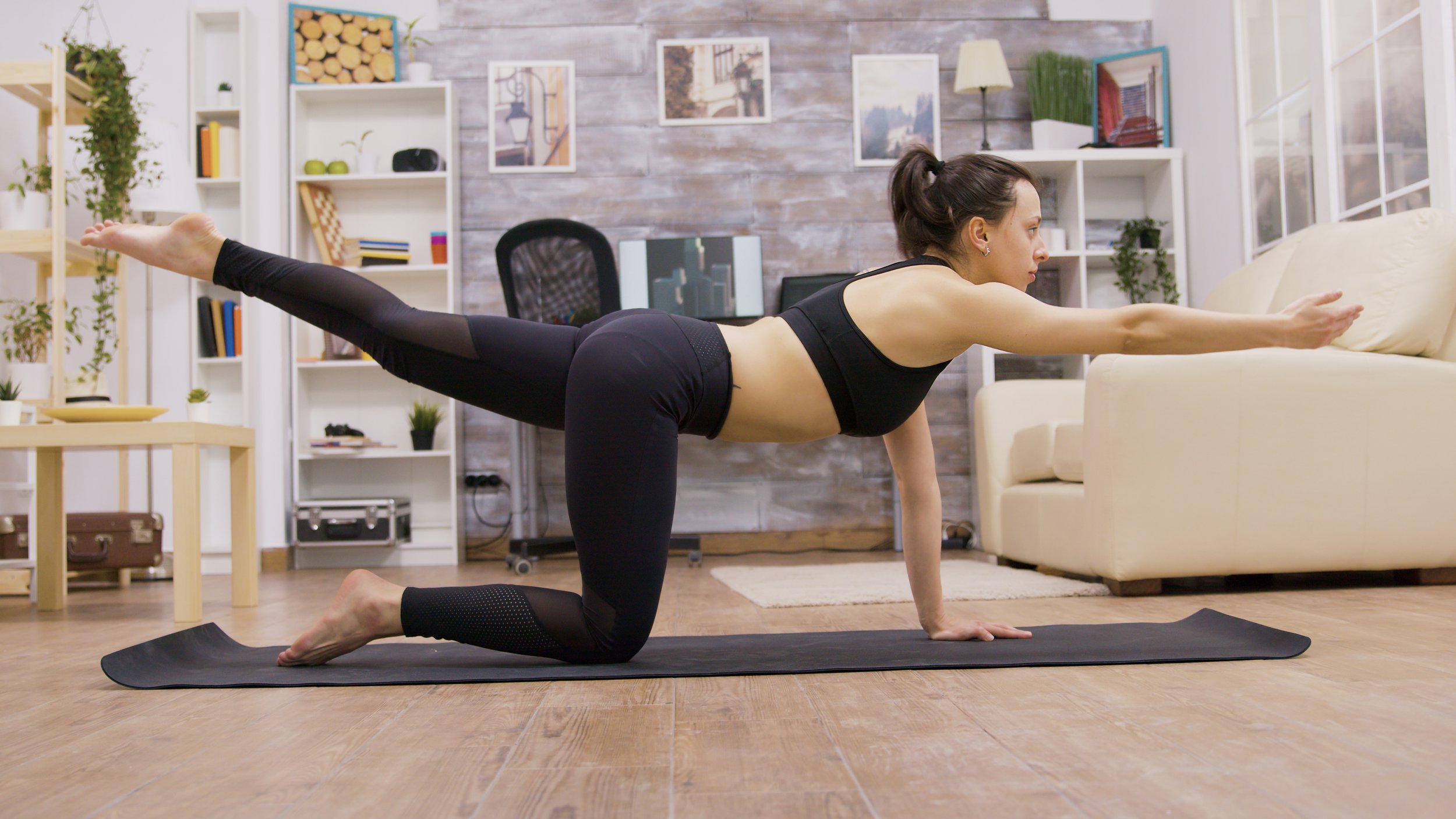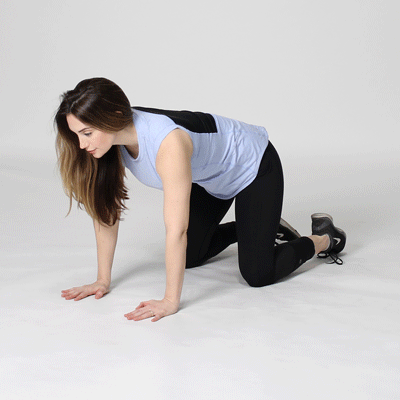The 8 Best Stretches For Upper Back Pain
Thoracic back pain, more commonly known as upper back pain, can get in the way of all aspects of life and work. Once pain-free activities, like sitting at a computer or exercising, may suddenly become painful. It can be frustrating to be at a social event, only to be interrupted by aching pain in the upper back.
The good news is it’s possible to find relief from upper back pain. Depending on the cause and symptoms, a range of different treatments can be used for upper back pain. Physiotherapy and the right exercises can be very effective in addressing the underlying cause of the problem and relieving tension in the neck, shoulders, and upper back.
This article outlines the 8 best stretches for upper back pain. But first, let’s discuss the common causes and symptoms of upper back pain.
The Thoracic Spine
The thoracic spine has 12 vertebrae, starting at the base of the neck and ending at the top of the lumbar spine. The thoracic spine attaches to the rib cage, and many structures connect and branch from the area, including nerves, joints, muscles, and other soft tissue. The thoracic spine rotates and bends to allow a wide range of motion, but it is also robust to protect vital organs in the chest. Given this complexity, there are many structures that can cause upper back pain.
Causes Of Upper Back Pain
There are a wide range of different causes of upper back pain. The most common causes are musculoskeletal, including muscle tension, stiffness, overuse, and poor posture. Other causes may include nerve irritation, joint dysfunction, osteoarthritis, degenerative disc disease.
Some of the risk factors associated with upper back pain include:
Gender
Age
Occupation
Manual handling or heavy lifting
Sedentary lifestyle
Chair height and workplace ergonomics
Physical and mental health
When To Get Help For Upper Back Pain
As there are many different causes of upper back pain, it’s important to get any symptoms assessed by a doctor or physiotherapist. Thoracic pain can be caused by serious underlying pathology, such as nerve compression, fractures, tumours, heart attack, and conditions such as ankylosing spondylitis. Any severe, persistent, or concerning symptoms should be assessed immediately, especially symptoms like loss of bladder or bowel control, sudden weakness or sensory changes, and shortness of breath or chest pain.
Signs And Symptoms Of Upper Back Pain
Upper back pain can occur anywhere in the thoracic pain. The symptoms can range from mild to severe and intermittent. Some people may only experience symptoms for a short period, whilst others may have symptoms that persist for weeks or months.
The following are some of the common symptoms of upper back pain:
Aching or tenderness in the upper back
Shooting or sharp pain to the neck, lower back, or even arms
Restricted movements, such as bending or lifting
Difficulty with everyday tasks, such as driving or completing work tasks
It’s also common for upper back pain to lead to mood changes, such as irritability, frustration, or poor mental health.
Treating Upper Back Pain
Upper back pain can be self-limiting and resolve on its own. However, sometimes it may require input from a physiotherapist for exercises or strategies like adjusting the chair height at work.
Some of the common treatments for upper back pain may include:
Soft tissue massage
Trigger point release
Spinal mobilisations
Passive modalities, including heat or ice therapy
Strapping or Kinesio taping
Dry needling
Ergonomic adjustments
Education and advice
Posture retraining
Supervised exercise
Strength training
Stretches
The Top 8 Stretches For Upper Back Pain
Exercises that target the upper back can provide significant pain relief from upper back pain. However, as with all exercise, there should be no pain and it’s a good idea to complete a warm-up before starting and a cool-down afterwards. A physiotherapist can help determine the right exercises for the best effect, which may include:
1. Cat-Cow Stretch
Ideal for: Overall spinal mobility and flexibility.
Start on all fours with a neutral spine. Make sure your palms are positioned under your shoulders and your knees under your hips.
Begin by gently arching your back, allowing the abdomen to sink towards the floor and the head to lift.
Then, gently tuck the pelvis and round the upper back, allowing the head to relax.
Return to the starting position.
2. Chest Stretch
Ideal for: Releasing tension in the front body.
Start by standing in a doorway.
Place one hand on the door frame with your elbow bent to 90 degrees.
Keeping the hand on the door frame, gently shift forwards until you feel a stretch across the chest.
Hold, then return to the starting position.
3. Side Bend Stretch
Ideal for: Releasing tension in the side body.
Start by sitting in a chair with a neutral spine.
Reach your left arm up to the ceiling, as if growing taller to reach the roof.
Bend towards the right slightly until you feel a stretch down the left side body.
Return to the starting position and repeat on the other side.
4. Child’s Pose Stretch
Ideal for: Thoracic mobility and overall relaxation.
Start on all fours with your toes untucked and hips slightly wider than the feet.
Gently reach your arms forwards out in front along the floor and send your hips back until they rest on your feet.
Relax into the stretch, then return to the starting position.
5. Thread The Needle Stretch
Ideal for: Restoring rotation and thoracic movement.
Start on all fours.
Thread your left arm under your body towards the right, just like “threading” a needle. Your head can rest on the floor.
Hold, then return to the starting position and repeat on the other side.
6. Gentle Trunk Rotation Stretch
Ideal for: Increasing flexibility in rotation.
Start by sitting in a chair.
Gently rotate towards the right. To deepen the stretch, the arms can assist the movement.
Hold for a short period, then return to the starting position and repeat on the other side.
7. Shoulder Rolls
Ideal for: Relieving muscle tension in the neck, shoulders, and upper back.
Start by sitting in a chair with a neutral spine and good posture.
Roll your shoulders in one direction.
Then, repeat in the opposite direction.
8. Neck Rolls
Ideal for: Relieving muscle tension in the neck and upper back.
Start by sitting in a chair with a neutral spine and good posture.
Begin by rotating the neck gently in one direction in a small circular motion. It’s a good idea to start with a small range of motion for comfort.
Then, repeat in the opposite direction.
When Is The Best Time To Stretch?
While there is no “right” time to stretch, it’s a good idea to settle into a routine and be consistent. A physiotherapist can help determine the best exercises and dosage by assessing the symptoms and underlying cause. They can also monitor the progress and make any changes as needed. For the best outcome, a physiotherapist may combine the stretching exercises with strengthening exercises too.
Book Now
Conclusion
For anyone looking for relief from upper back pain, whether the symptoms have only just started or have been around for a while, find a local physiotherapist to start on the road to recovery.
















